It’s taken us a while, almost two years in fact, but we finally made it to the stunning Great War Exhibition, by Sir Peter Jackson. Driving into Wellington City, we spotted MV Kaitaki in the harbour. Capable of carrying up to 1600 passengers, it is the largest ferry operating in New Zealand waters. We remember the excitement when our group of four vans boarded this vessel back in 2012 when we embarked on our 3 month South Island Odyssey caravan trip. Soon, we keep telling ourselves, we will be travelling across Cook Strait again.
M V Kaitaki
We drove adjacent to the Terrace, full of high priced office blocks and apartments.
Finally, after a hiccough or two from the Sat Nav wanting to take us up one way roads in the city, we finally made it to the historic Dominion Museum. I’m sure I’m just one of thousands who can remember school trips to the museum. Up the steps we went, and paid our entry fee – we had decided to take a guided tour and joined a small group.
Dominion Museum building
The tour took us through a picturesque Belgium town, past lovely homes and shops, while our guide explained the catalyst which started WW1.
Pretty Belgium buildings
In such a short time, Britain was involved, and young men were enlisting, many of them underage. The consensus amongst the men was, “We’ll be home by Christmas”. Being part of the British Empire, New Zealand men were also involved, to help out Mother England.
Getting ready to enlist
We weren’t previously aware of just how many countries were involved as Allied Nations during WW1. The list makes fascinating reading.
Allied countries in WW1
When the British sent 70,000 troops to assist in the defence of Belgium, they expected a fast moving mobile war. Short of trucks, London Double Decker buses were pressed into war service. 900 buses would be sent to France and Belgium, with their bright red colours and gaudy advertising quickly covered with green paint. Most glass was removed for safety, and the windows boarded up. They were used as ambulances, and also converted into mobile messenger-pigeon lofts. The soldiers nicknamed their buses “Old Bill”
.
“Old Bill” London Type B bus
And how many horses were sent to war, never to return?
The men settled down to war in the trenches. Our guide showed us examples of the different trenches built by both sides. The Allies trenches were originally constructed of straight lines, while the German trenches were made of curves, making them less liable to collapse. Carrier pigeons played an important role in sending messages, as did the very bulky telephones.
In the trenches with pigeon cage in the back
Imagine the horror of tanks rumbling across the trenches and the men trapped underneath. It made me feel quite queasy to view this.
Men trapped under a tank



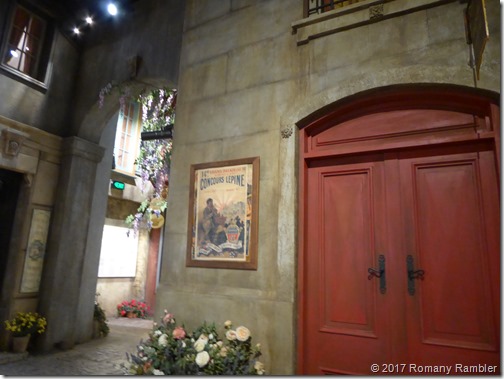
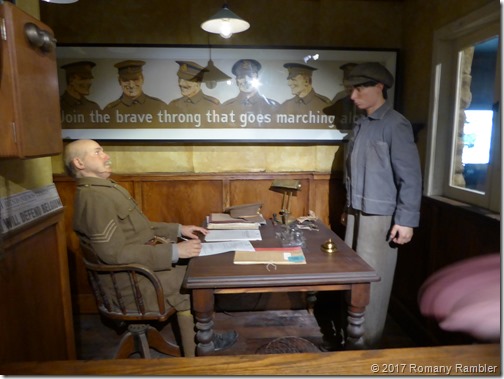

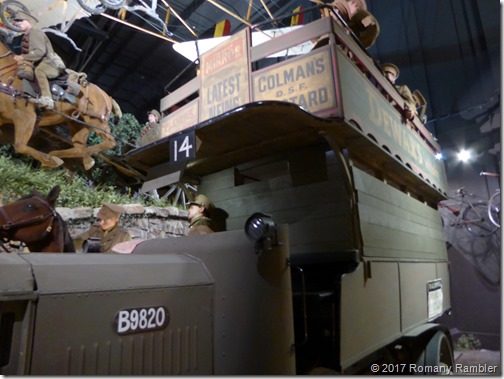
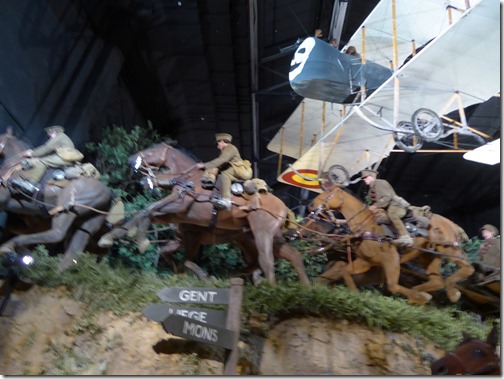


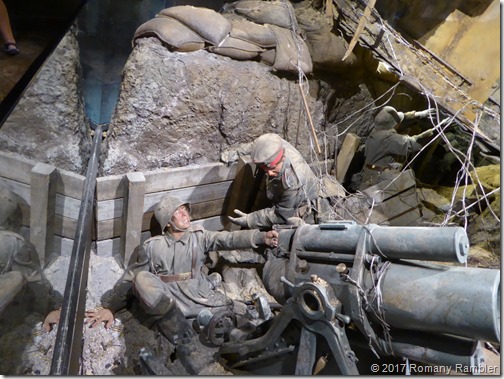
1 comment:
A fabulous but poignant display, we loved it as well as the Gallipoli one at Te Papa. Pleased you enjoyed it too.
Post a Comment